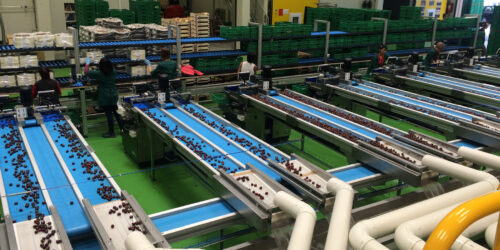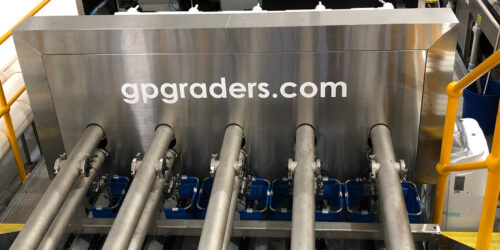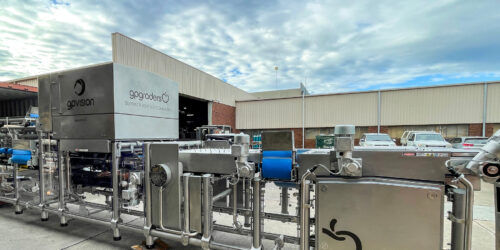We’re proud to partner with so many exceptional agricultural businesses, enhancing the overall productivity and excellence of the fresh produce industry globally.
- 15 November 2023
- gpgraders
- No Comments

Sweet Success: Celebrating 60 Years of GP Graders
This year we celebrate 60 years in business, although we’ve been around orchards and the fruit-picking industry for much longer than that. 1963 was the year our journey to design and manufacture the best sorting and grading solutions for fresh producers and packers around the globe began. From simple sorting machines to our revolutionary GP Vision grading platform, technology has changed over the years, but our goal to bring the best solutions to the industry has not.
Let’s step back in time and revisit the journey that has brought us to this incredible business milestone.
The 1960’s
No one wants to buy a bruised apple. It was this idea that led founder Geoff Payne to redesign the belt and roller system of our graders for gentler handling. This then led to the development of low-cost gooseneck bin fillers and improved packing systems so more apples could make it to market in perfect condition. The 1960s also saw the introduction of multi-lane apple sizers for improved efficiency.
The 1970’s
This is the decade that the tomato grading system was designed and implemented. Revolutionary to the Australian industry at the time, this was the decade where the seed for creating graders that could handle many different types of fruit and vegetables was sewn. During this time the team also designed Australia’s first apple waxing unit and brought it to market.
The 1980’s
As consumer demand increased, the 80s saw the development and introduction of Australia’s first mechanical weight sizer, which a few years later led to computerized weight sizers. The introduction of automatic tray filling for apples and a new finger belt bin filler further sped up production.
In the late 80s GPGraders began to show their capability beyond the apple market. The first cherry sizing and grading line with stepped sizing shafts was developed and released and the team also supplied their first large citrus lines with waxing and dual-drying tunnels.
The 1990’s
The 90s was a decade for technology leaps and market diversification. Cherries continued to remain a focus with new grooved conveyor belts and improved cherry cluster cutting technology implemented. The release of a high-speed computerized weight sizer for use across all tree fruits established GP Graders as a sought-after choice for those wanting to grade more than one type of fruit.
During this time colour sorting machinery for tomatoes was introduced as well as the first high-speed rockmelon sizing and sorting machine. Mangos also came into focus in the 90s. The first mango grading and sorting machinery was released as well, and a de-sapping system was designed.
1993 saw the first citrus export machine to Thailand and in 1997 the first cherry export machine to Italy – GP Graders was beginning to establish a name for itself internationally.
The 2000’s
Improving defect grading was a major focus in the 2000s. Apple defect grading technology was introduced in 2001 and the first electronic cherry grader for size and colour in 2006. A major export drive for mechanical grading lines saw the GP Graders name and technology recognised worldwide.
The 2010’s
GP Graders became the first in the world to introduce defect grading for cherry grading machinery. In 2013 the company won Australian Exporter of the Year and in 2016 director Stuart Payne was inducted into the Victorian Manufacturing Hall of Fame. As well as being a decade for accolades, the team also introduced their first blueberry defect grader in California and were the first to develop shrivel / dehydration detection for blueberries.
2019 saw the launch of AirJet® Vision, GP Grader’s developed vision technology platform, which would go on to be renamed gpVision ®
Today
AirJet® Vision becomes gpVision®, marketing the beginning of the development of vision grading systems for a new range of fruits. Multi-View Camera (MCVS) rolled out for cherry tomato grading, enabling the capture of the entire fruit surface.
GP Graders machinery now confidently sort and grade a wide range of fresh product such as cherries, blueberries, lemons, oysters, and stone fruit. The team regularly work with growers to develop solutions for new industries as they arise.
Thanks for taking the time to look back and reflect on our 60-year journey. If you’d like to work with a company that has a proven history in the sorting and grading industry, or you’d like to explore using a GP Grader or gpVision® in your business, let’s talk.



